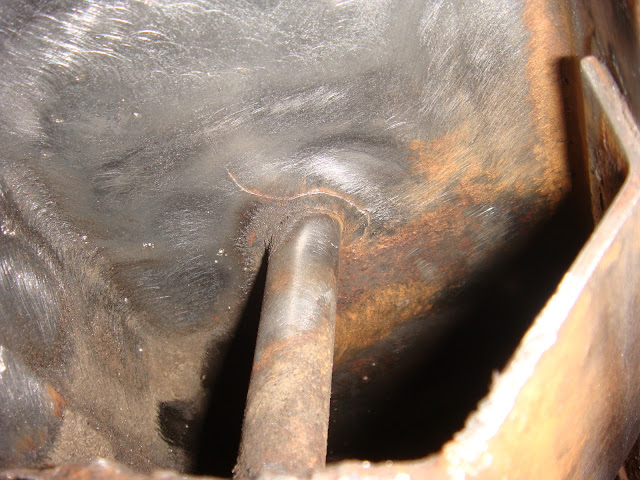What I wanted to collect here is a listing that you can go through from easiest to most difficult. Use this list to check through things which might be causing that clunk in the back end of your Six.
Starting off with the easiest things:
Check your trunk for -
Loose Jack or tools
Loose spare tire or spare retaining parts.
If the above checks out, its time to check the running gear in the rear of the car.
Take time to put the car on jack stands, a lift, whatever secure safe method you have. I'm not making safety recommendations here. You should learn those from a pro or whatever method is available to you.
With the wheels off the ground, grab the wheels at 12 and 6 o'clock and push them in/out. If you feel more than about 3/32" (2-3mm) of play, you have worn wheel bearing in the rear hubs and should get them serviced immediately. This is not a set of bearings you can service at home. The tools are specialized and failure here destroys the hub. My suggestion is to contact the 6-Pack car club and ask for their help. There are a couple people that rebuild hubs for a small fee within the club.
If hubs check out, remove the wheels and look further inside.
Next, check the bolts that hold the lever shocks to the frame. They frequently come loose. Re-torque if necessary.
Check the exhaust system and its hangers for excessive movement.
Next, check the half shaft and driveshaft bolts. 4 per connection. These are specialty bolts with lock nuts. They should all be tight. Loose bolts here allows the connection to twist slightly and knock.
Check each of the universal joints in the rear for excessive play. 2 on each axle and 1 on the driveshaft at the rear. You can grab them and rotate the brake drum with the other hand to see if there is play in the universal joint. Replace if necessary. Use Spicer UJ's with a grease Zerk in the cap.
At this point, we've exhausted the simple to inspect sources of clunk.
The final 2 sources are broken passenger side forward differential mounts and play in the differential.
Regarding play in the differential- TR6 diffs have more play or lash than a modern Asian diff (R200 or Miata).
The front right differential mount in the TR6 is a significant weak point in the car. Repeated hard launches stresses the mount and breaks the pin loose from the frame or the lower mount portion. This cannot be seen with the differential in place. You'll need to remove the differential and then wire wheel away any grease, undercoating or other materials which hide the metal. The best fix is welding the pin in place and then boxing both front mounts in. I covered this procedure in this blog a few years ago. A link is below.
This was my broken mount.

